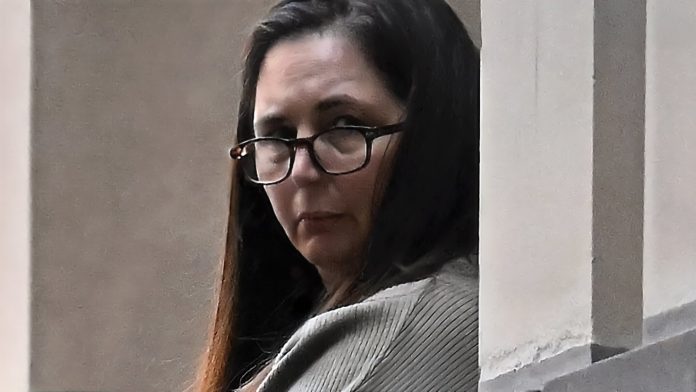The Poisoned Table: A Tragic Australian Tale of Trust Betrayed Over Family Meals
In the quiet, unassuming town of Leongatha, nestled 135 kilometers southeast of Melbourne, a chilling tragedy has unfolded, forever altering the fabric of a close-knit community. With a population hovering around 6,000, you might expect stories here to be about farm fairs or coastal festivals—not a nightmarish poisoning that claimed three lives and nearly destroyed a family from within.
But sometimes, evil is woven into the most familiar, seemingly innocent places: around the family dinner table.
A Deadly Feast
Erin Patterson, a 50-year-old woman once regarded as a pillar in this small Australian community, stunned the nation last month when a jury found her guilty of poisoning and murdering her mother-in-law Gail Patterson, father-in-law Donald Patterson, and Gail’s sister Heather Wilkinson. The fatal weapon? Beef Wellington laced with deadly death cap mushrooms—one of nature’s most lethal fungi.
It was more than just a tragic accident, the court found. Erin had also attempted to kill Ian Wilkinson, Heather’s husband, who survived the same deadly lunch attack. But the horror doesn’t end there.
More Than Murder: A Pattern of Poisoning
Behind the scenes, new revelations emerged that paint a nightmarish picture: Erin had allegedly been poisoning her estranged husband, Simon Patterson, for years. In a twist that sounds like something ripped from a psychological thriller, Simon began meticulously documenting his mysterious illnesses—each episode striking after he consumed one of Erin’s home-cooked meals.
“After the first time I got sick, I had the idea I got sick from Erin’s food,” Simon told a Melbourne pre-trial hearing in October 2024. Soon after, the suspicions became impossible to ignore. From penne bolognese to chicken curry and even a sandwich wrap, every meal seemed to prey on his life.
Simon’s condition worsened dramatically. Hospitalized, he was close to death, temporarily paralyzed, and required a partial bowel removal. The court heard how Erin’s alleged poisonings had literally pushed him to the brink.
The Legal Labyrinth: Trials and Secrets
The prosecutorial journey in this case has been labyrinthine. Erin was initially charged with three counts of murder and five counts of attempted murder in 2023—the latter concerning Simon and others. But Justice Christopher Beale later split the charges into two separate trials, and just before the first trial commenced, prosecutors dropped the attempted murder charges linked to Simon.
This meant that the jury never heard crucial evidence about these alleged attempts on Simon’s life in 2021 and 2022. Details of computer searches for poisons found during a search of Erin’s home were also excluded from the trial—the shadows lurking just out of sight.
Erin’s defense clings to a desperate narrative: the tragic deaths were a “terrible accident.” Through it all, Erin has steadfastly maintained her innocence.
A Community Reeling
For people in Leongatha and across Australia, the revelations have been nothing short of soul-shattering. “You don’t think something so dark can happen here, in a small town where everyone says hello on the street,” said local shopkeeper Marie Andrews. “It makes you wonder how well you really know the people closest to you.”
Neighbour Kevin Harris, who often saw the Patterson family together, said slowly, “It’s a reminder that appearances can fool us. You never really know what goes on behind closed doors.”
Unpacking the Poison: A Botanic Terror
The death cap mushroom (Amanita phalloides) is infamous worldwide for being one of the deadliest natural toxins. A single cap can cause irreversible liver and kidney failure, sometimes fatally, within days. In countries like Australia, where foraging and dining on wild mushrooms is culturally significant in some circles, awareness campaigns have tried to educate the public about the risks.
Worldwide, poisonous mushroom-related deaths are rare but devastating. Erin’s choice of this specific toxin adds a harrowing botanical layer to the story, underlining the sophistication and cold intent behind the crimes.
A Wider Conversation About Domestic Violence and Poisoning
Erin Patterson’s case is not just about a series of poisonings—it taps into broader issues of domestic violence, betrayal, and the invisible ways harm can be inflicted within households. Poisoning, often viewed through a historical or fictional lens, is still very much a contemporary threat, one that quietly unfolds before exploding into headline-grabbing tragedy.
Dr. Selena Martin, a forensic toxicologist in Sydney, notes, “Cases like this highlight a terrifying undercurrent in family violence. The use of toxins at home can evade early detection, especially when symptoms mimic common illnesses.”
How often do we dismiss symptoms—nausea, paralysis, mysterious organ failure—as something mundane in the intimacy of home life? Erin’s story forces us to reckon with uncomfortable questions about trust and vulnerability.
Looking Ahead: Justice and Reflection
The next chapter in this saga awaits on August 25, when the court will hear victim impact statements—a moment expected to be deeply emotional and revealing. With the trial still unfolding, many Australians and observers worldwide watch with a mixture of fascination, sorrow, and a hunger for justice.
For Simon Patterson, the ordeal is far from over. “I just want the truth to come out,” he said quietly. “For my kids, for my family—I want people to understand how something like this can happen.”
As you read this, dear reader, consider the layers beneath our everyday routines: the meals we share, the trust we place in loved ones, and the silent stories that sometimes hide behind the walls of seemingly tranquil homes. We often believe home is a sanctuary; this story painfully reminds us how fragile that sanctuary can be.
What warnings can we take from this tragedy? How can communities better protect themselves from the hidden dangers that may lurk in plain sight? And perhaps more poignantly—how do we reconcile the darkness embedded in human nature with the hope that bonds of family and love should nurture?
In a world rife with uncertainty, the story in Leongatha resonates as a stark but vital meditation on trust, mortality, and the quiet horrors that sometimes hide behind a comforting meal.










